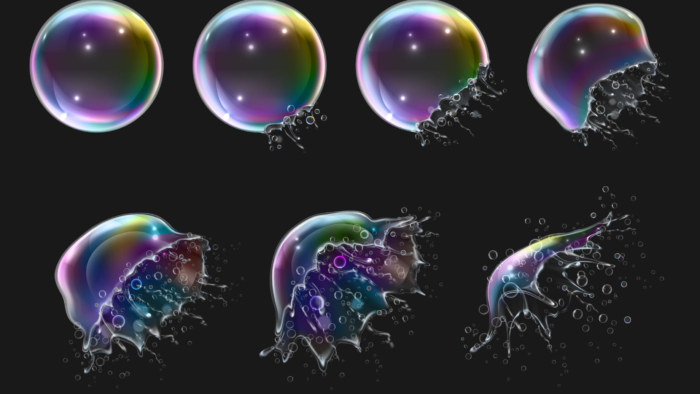Welcome to a fascinating journey into the world of materials and their behavior under external forces. In this blog post, we will delve deep into the concepts of deformation and strain, exploring their significance in understanding how materials respond to applied loads. From everyday objects to structural components in engineering marvels, the principles of deformation and strain govern their mechanical behavior. Let’s embark on this exploration together!
Section 1: Defining Deformation
Subsection 1.1: What is Deformation? Deformation, in the realm of material science and engineering, refers to the alteration in shape or size of a material when subjected to external forces or loads. It’s like the material’s response to being pushed, pulled, twisted, or compressed. Imagine a rubber band stretching when pulled or a metal rod bending under pressure. These are examples of deformation in action.
Subsection 1.2: Types of Deformation There are several types of deformation that materials can undergo:
- Elastic Deformation: This type of deformation is reversible, meaning the material returns to its original shape once the applied force is removed. Think of a spring stretching and then contracting back to its original length.
- Plastic Deformation: Unlike elastic deformation, plastic deformation is irreversible. The material undergoes permanent changes in shape or size, such as when you bend a piece of metal and it stays bent even after releasing the force.
- Viscoelastic Deformation: Some materials exhibit a combination of elastic and viscous behavior, known as viscoelastic deformation. They show time-dependent responses to stress, like a soft material slowly deforming under a constant load.
Section 2: Understanding Strain
Subsection 2.1: What is Strain? Strain is a measure of the deformation experienced by a material relative to its original size or shape. It quantifies how much the material has been stretched, compressed, or twisted under applied forces. Mathematically, strain is often represented as the ratio of the change in dimension to the original dimension.
Subsection 2.2: Types of Strain Similar to deformation, strain can be classified into different types based on the deformation mode and behavior of the material:
- Tensile Strain: Occurs when a material is stretched or elongated along its axis due to tensile (pulling) forces.
- Compressive Strain: This type of strain occurs when a material is compressed or shortened along its axis due to compressive (pushing) forces.
- Shear Strain: Shear strain results from forces that cause one part of the material to move parallel to another part, leading to a change in shape without a change in volume.
Section 3: Elastic Deformation and Hooke’s Law
Subsection 3.1: The Elastic Regime In the elastic regime, materials exhibit reversible deformation, meaning they return to their original shape after the applied forces are removed. This behavior follows Hooke’s Law, which states that the stress applied is directly proportional to the strain produced, within the material’s elastic limit.
Subsection 3.2: Young’s Modulus and Elastic Constants Young’s Modulus, also known as the modulus of elasticity, is a fundamental property of materials that quantifies their stiffness in response to tensile or compressive forces. It is defined as the ratio of stress to strain in the elastic region and is a crucial parameter in material characterization.
Section 4: Plastic Deformation and Yield Stress
Subsection 4.1: Yielding and Plastic Flow When materials undergo plastic deformation, they exhibit permanent changes in shape or size beyond their elastic limit. This occurs when the applied stress surpasses the material’s yield stress, initiating plastic flow and structural changes.
Subsection 4.2: Strain Hardening and Ductility Materials that can undergo significant plastic deformation before failure are termed ductile. Strain hardening is a phenomenon observed in some materials where increased plastic deformation leads to increased strength and hardness.
Section 5: Viscoelastic Behavior and Creep
Subsection 5.1: Time-Dependent Deformation Viscoelastic materials exhibit time-dependent deformation responses, known as creep. Creep occurs when a material slowly deforms under constant stress over time, often seen in polymers, rubber, and certain metals at elevated temperatures.
Subsection 5.2: Stress Relaxation and Viscoelastic Models Stress relaxation is the gradual decrease in stress in a viscoelastic material under constant strain. Various viscoelastic models, such as the Maxwell and Kelvin models, help describe and predict the behavior of these materials under different loading conditions.
Section 6: Engineering Applications of Deformation and Strain
Subsection 6.1: Structural Analysis Understanding deformation and strain is crucial in structural analysis and design, where engineers assess how materials behave under various loads to ensure safety and performance of structures.
Subsection 6.2: Material Testing and Characterization In material testing, deformation and strain measurements provide valuable insights into material properties, mechanical behavior, and performance under different environmental conditions.
Section 7: Future Trends and Innovations
Subsection 7.1: Advanced Material Design Advancements in material science and engineering are leading to the development of novel materials with tailored deformation and strain properties, enabling innovative designs in various industries.
Subsection 7.2: Simulation and Modeling Numerical simulation and modeling techniques allow engineers and researchers to predict and optimize material behavior under complex loading conditions, contributing to the advancement of deformation and strain analysis.
Conclusion
In conclusion, deformation and strain play integral roles in understanding how materials respond to external forces and loads. From elastic to plastic and viscoelastic behavior, the behavior of materials under deformation opens doors to diverse applications in engineering, materials science, and beyond. By grasping these concepts, we gain insights into the mechanics of the world around us and pave the way for innovative solutions and advancements in material design and technology.


This paragraph presents clear idea for thee nnew visitors of blogging,
that truly how too do running a blog. https://z42mi.mssg.me/